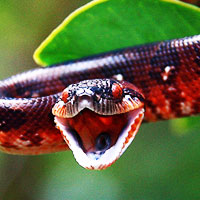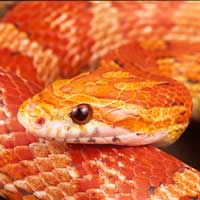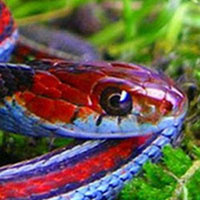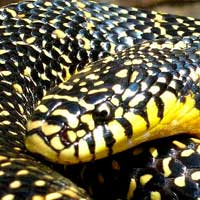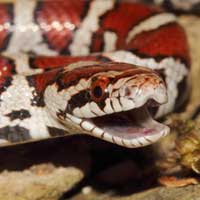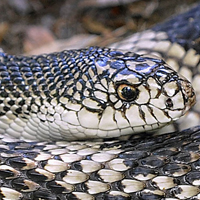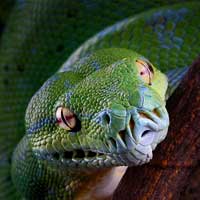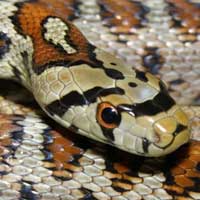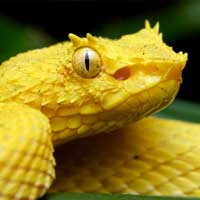Northwestern Garter Snake: Everything You Need to Know
The scientific name of the Northwestern Garter Snake is Thamnophis ordinoides. It belongs to the Colubridae family, which is the largest snake family and includes many non-venomous and mildly venomous snake species.
Scientific Name: Thamnophis ordinoides
Snake Family: Colubridae
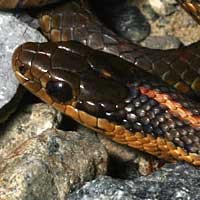
Introduction to the Northwestern Garter Snake
The Northwestern Garter Snake (Thamnophis ordinoides) is a vibrant and adaptable species native to the Pacific Northwest. Known for its diverse color patterns, this snake is a non-venomous and harmless reptile that thrives in various environments. Popular among reptile enthusiasts and an essential part of its ecosystem, the Northwestern Garter Snake is an intriguing subject for wildlife lovers.
Exploring the Habitat of the Northwestern Garter Snake
The Northwestern Garter Snake is a versatile species that occupies a wide range of habitats, from coastal areas to forests and meadows. It is most commonly found in the Pacific Northwest, stretching from northern California to British Columbia.
Preferred Habitat Features:
- Coastal grasslands
- Forests with abundant underbrush
- Wetlands and stream banks
- Suburban gardens with cover
| Region | Habitat Type | Key Features |
|---|---|---|
| Pacific Northwest | Forests, wetlands | Damp, vegetation-rich areas |
| Northern California | Meadows, coastal zones | Moderate climates |
Diet and Feeding Habits of the Northwestern Garter Snake
The Northwestern Garter Snake is an opportunistic feeder, with a diet that primarily consists of small prey. It plays a crucial role in controlling insect and amphibian populations in its natural habitat.
Primary Diet:
- Earthworms
- Slugs and snails
- Frogs and tadpoles
- Occasionally small fish or insects
In captivity, these snakes should be fed a diet that replicates their natural feeding habits. Offering a mix of live and frozen prey items ensures proper nutrition and keeps the snake healthy.
Behavior and Temperament of the Northwestern Garter Snake
The Northwestern Garter Snake is known for its docile and curious nature. It is an active species that spends much of its time foraging for food or basking in the sun.
Key Behavioral Traits:
- Diurnal and active during the day
- Non-aggressive and unlikely to bite
- May emit a musky odor when threatened
- Excellent climbers and swimmers
With regular handling and proper care, the Northwestern Garter Snake can become accustomed to human interaction, making it a suitable pet for reptile enthusiasts.
Health and Lifespan of the Northwestern Garter Snake
In captivity, Northwestern Garter Snakes can live up to 10-15 years with proper care. Their health is largely dependent on a clean environment, a balanced diet, and regular observation for potential issues.
Common Health Concerns:
- Respiratory infections caused by high humidity
- Parasites, especially in wild-caught specimens
- Skin issues from improper shedding
Preventing health issues involves maintaining optimal temperature and humidity levels, ensuring a clean enclosure, and scheduling regular check-ups with a reptile veterinarian.
Reproductive Behavior of the Northwestern Garter Snake
The Northwestern Garter Snake is ovoviviparous, giving birth to live young rather than laying eggs. Mating typically occurs in spring, followed by a gestation period lasting 2-3 months.
Reproductive Details:
- Mating season: Spring
- Gestation period: 2-3 months
- Litter size: 5-30 neonates
- Neonates are independent from birth
In captivity, providing a stress-free environment and simulating seasonal changes can encourage successful breeding.
Proper Handling and Care for the Northwestern Garter Snake
Handling and caring for the Northwestern Garter Snake requires attention to its natural behaviors and environmental needs. Providing a suitable enclosure with adequate space and temperature regulation is essential.
Handling and Care Tips:
- Handle gently and regularly to build trust
- Provide a well-ventilated enclosure with hiding spots
- Maintain temperatures between 70-85°F with a basking area
- Clean water sources and substrate frequently
With the right care and dedication, the Northwestern Garter Snake can thrive in captivity and become a fascinating addition to any reptile collection.
